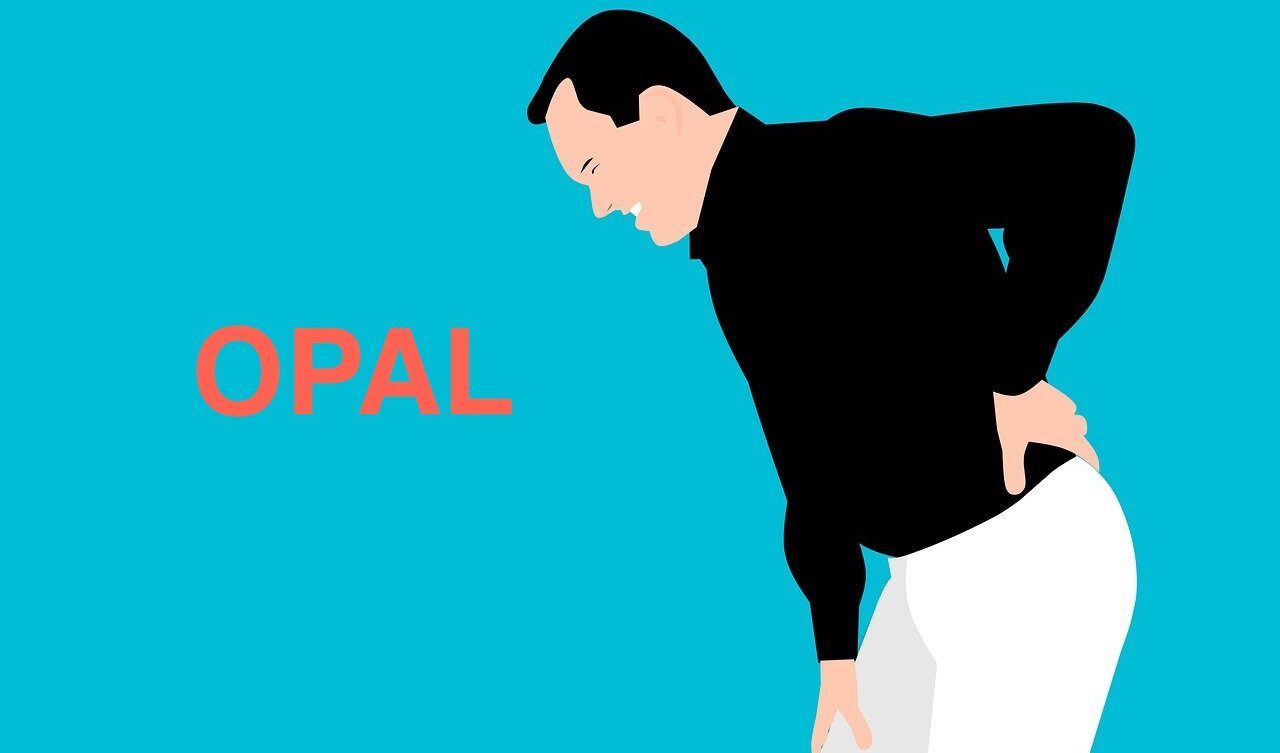Conclusion: Opiates are no more effective than placebo at reducing pain severity for acute back pain, and therefore should not be part of routine patient management
- The Opioid Analgesia for Acute Low Back Pain and Neck Pain (OPAL) trial investigated the efficacy of opioid analgesia vs a placebo control in managing acute low back pain and neck pain
- This was a triple-blinded, placebo-controlled trial of adults 18 yrs or older presenting to primary care or Emergency Departments in Sydney, Australia with 12 weeks or less of at least moderate severity back or neck pain
- Participants were excluded if they had known/suspected serious pathology (e.g. caudal equina), were already taking opiates for the pain, had prior spinal surgery within 6 months or were being considered for surgical or interventional procedures
- Patients were randomised to receive with “guideline-recommended care” with the addition of an opiate or placebo
- Opiate therapy consisted of modified release oxycodone 5mg/naloxone 2.5mg (Targin) twice daily, titrated up to 10mg twice daily as the maximum dose
- Guideline-recommended care consisted of reassurance of positive prognosis, advice to stay active and avoid bed rest, an other non-opiate analgesics
- Provision of this care was not monitored and was left to be individualised to each patient by the treating clinician
- The primary outcome was pain intensity at 6 weeks after randomisation
- Secondary outcomes included physical functioning, quality of life and global perceived effect measured at various time points
- 347 participants were randomised with only 1 being excluded post randomisation (following a diagnosis of bony metastasis)
- Mean age was 44.7 yrs and while the opiate group had a higher proportion of female participants (53% in opiate group vs 45% in placebo) the groups were otherwise well matched with no major differences in age, BMI, pain location or employment status
- Note: 97% were recruited from primary care (335/347) with only 3% (12/347) from Emergency Departments
- Results: No significant difference was found in pain scores at 6 weeks between groups (adjusted mean difference 0·53, 95% CI –0·00 to 1·07, p=0·051)
- There was also no difference found in physical functioning, quality of life or perceived effectiveness
- No significant difference in the proportions of adverse reactions reported between groups, however there were more reports of nausea, constipation, and dizziness in the opiate group
- Risk of misuse was not different between groups at weeks 12 and 26, but significantly higher in the opioid group at week 52 (p=0.049)
- 33 (19%) in the opiate group and 25 (15%) in the placebo group had discontinued from the trial by week 6, due to loss to follow-up and participant withdrawals
- Strengths:
- This is the first blinded, placebo-controlled, multicentre trial of an opioid for acute non-specific spinal pain to measure treatment effects including short-term and long-term harms
- Limitations:
- Approximately 25% of data were missing at the primary timepoint, which reduces the power of the trial and could introduce bias
- The vast majority of patients were recruited from primary care setting, and therefore they may reflect a population with less severe symptoms than those attended Emergency Departments
- Only 58% of participants reported on their compliance to the medication regime, and of that group just over half were actually compliant
- Data on what guideline-recommended care was actually provided was not collected
- Only a modified release opiate was examined, and was prescribed for 6 weeks which may not reflect real clinical practice (that is, a short course of an immediate release opiate)
Reference: Jones CMP, Day RO, Koes BW et al; OPAL Investigators Coordinators. Opioid analgesia for acute low back pain and neck pain (the OPAL trial): a randomised placebo-controlled trial. Lancet. 2023 Jul 22;402(10398):304-312.

